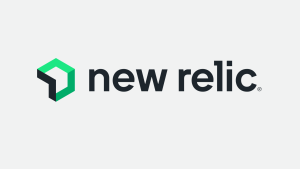Attention nonprofits: Get ready to receive! Giving Tuesday is a growing global movement, the Tuesday after Thanksgiving, to promote charitable giving the way Cyber Monday has promoted shopping. Don’t find out about your system’s flaws at the critical high-traffic moments. Instead, make your donors happy and capture more of the opportunity. Planning and preparation, solid communication, and using New Relic can help you and your team be ready for your biggest events. And, if you’re a nonprofit customer in our Observability for Good program, you receive special discounts and extra support with New Relic.
Follow our tips to know and trust your system with observability. (For best use of our tips, meet these prerequisites for laying your quality foundation.) Your donors will love giving to you!
Tip #1: Know the current state of your environment
Even before you start making a plan for Giving Tuesday, take inventory. You will also want to identify current baselines for performance and availability at the application, infrastructure, service, and frontend levels.
- Establish current state and learn more about key performance indicators (KPIs).
- Check out the quality foundation dashboard, which you can adapt to include all your performance indicators. Make sure you have charts measuring performance, error/crash rates, throughput, uptime (availability), app response time, database response time, percentage of transaction time spent in database, resource utilization and database query times, API calls to view internal and external dependencies.
- Complete a bottom-of-the-funnel analysis to optimize conversion by starting with the end of the user journey.
- Use change tracking such as deployment markers or custom events to understand if and when the landscape changes.
Consider integrating New Relic CodeStream, a developer collaboration platform that enables your development team to discuss and review code in a natural and contextual way. Developers can be more proactive about the quality of their code by discovering production errors right in their IDE.
Tip #2: Set your baselines and define success
Once you’ve identified your KPIs, you're ready to establish the baseline performance for your service. What does “good” look like for you?
- Service level management establishes the baseline for service to get the outcomes you desire for uptime, customer experience, growth, and efficiency.
- “Golden journeys” are a collection of the essential actions you care about the most. Examples might include searching for products, adding items to a basket, checkout, and payment. Synthetic monitoring is a powerful capability to constantly test the availability of these actions.
- Service Maps can help provide a birds-eye view of dependencies in your architecture as well as their current health and performance.
- You don’t need to watch everything. Prioritize and ensure that you're keeping an eye on what’s really important.
Tip #3: Test your ability to meet baselines under stress
Under stress, your services will likely perform differently. Test capability based on your expectations for Giving Tuesday. Be aware of what your platform looks like under different load profiles. You might need different state dashboards for different “postures,” with thresholds and indicators set differently for low traffic, normal operation, and peak events. Learn more about how you can customize and use dashboards in New Relic. Check out more in the blog Performance engineering and load testing.
Tip #4: Make your contact center your BFF
Connect and collaborate with your contact center—they are the direct connection with your donors, a trusted canary, and your voice in case something goes wrong.
- Establish communication protocols and points of contact, with redundancies, well in advance of your big days. Make sure they're getting what they, and in turn your donors, need for an outstanding experience.
- Give access to New Relic as a basic user. Provide the visibility they need in dashboards(s) tailored to their needs. Add new content to your dashboard from metrics and events and query builder.
- Empower them to escalate, and in turn, go further to define or explain terms like SEV2 incident, links to runbooks, and team contacts on relevant command center dashboards.
Tip #5: Add capacity if needed
Your game day testing might lead you to decide to reconfigure your environment to better serve peak events. For example, your Giving Tuesday posture might require more database capacity to be brought online, more virtual machines (VMs) added to your cluster, or more customer service operators staffing the online chat.
Identify any existing or potential issues that could get in the way of meeting your goals. How much cloud and infrastructure capacity do you need to put in place (both planned and dynamic) so you can scale to meet those expectations?
Tip #6: Optimize the payment process
The payment step and the payment success rate are critical to your success on Giving Tuesday. Pay special mind to your checkout processes.
- Mark your checkout transaction as a key transaction. Key metrics to track are payment success rate, payment gateway response time, and third-party payment provider response time.
- Go further and create service levels from the key transactions page.
- Set alerts and notifications of any issues with key transactions, as well as buyer errors, slow networks, and other issues.Test the checkout process at regular intervals using synthetic monitoring.
- Check out workloads to quickly determine the health of your payment service alongside all of its dependencies
Tip #7: Stay flexible
Even the best laid plans have shortcomings. Be prepared to cope with rapidly changing plans and priorities to keep things humming in real time when it matters most—to stay agile and resilient instead of locking down your systems so tightly that they become brittle, more likely to break, and more difficult to recover. New Relic Lookout is great for investigating real-time performance changes in your environment. Be sure you understand how to use this tool before you need it.
Tip #8: Review and reflect
To leverage the lessons, hold an evidence-based, blameless postmortem as soon as possible. Instead of relying on opinions and resorting to finger-pointing, use your performance observability data to analyze the data, especially any anomalies, exceptions, and errors.
- Queue up items on the backlog for remediation.
- Identify innovation and performance improvement goals.
- Take a close look at your cart abandonment rate. How much of that is due to app performance problems versus other variables, such as issues with external payment providers or other third-party services?
- Record these outcomes and procedures, so everyone can easily find them when this time comes around again!
Tip #9: Don’t forget to celebrate your success
You did it! Like training for a marathon, observability at its best is a maintenance exercise. Check out our improvement process and observability maturity series for continuous improvement. If you’re not already an Observability for Good customer, consider verifying as an eligible nonprofit, charity, or NGO. We would love to work with you to get your system ready for Giving Tuesday.
The views expressed on this blog are those of the author and do not necessarily reflect the views of New Relic. Any solutions offered by the author are environment-specific and not part of the commercial solutions or support offered by New Relic. Please join us exclusively at the Explorers Hub (discuss.newrelic.com) for questions and support related to this blog post. This blog may contain links to content on third-party sites. By providing such links, New Relic does not adopt, guarantee, approve or endorse the information, views or products available on such sites.



